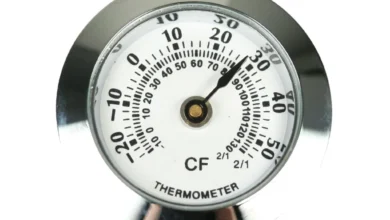BMW E90 M3 EDC Damper Connector Corrosion: Diagnosis, Causes & Solutions

BMW E90 M3 EDC Damper Connector Corrosion: The BMW E90/E92 M3 boasts an advanced Electronic Damper Control (EDC) system—designed for adaptive suspension and dynamic comfort. However, a lesser-known Achilles’ heel of this system is corrosion at the damper connector. This stealthy issue can trigger suspension failure, warning messages, and degraded ride quality. Let’s explore its causes, symptoms, and reliable fixes.
1. What is EDC Connector Corrosion and Why It Matters
The EDC system relies on electrical connections atop each shock absorber. When these connectors corrode, the moisture-induced resistance disrupts signal transmission between the EDC module and dampers. As a result, the EDC module may shut down, leaving the suspension stuck in one, usually firmer setting. Drivers may experience a rough ride or get fault codes.
A user shared, “The workshop found that one of the connectors was corroded and wasn’t making proper contact…” — causing a repair that, while inexpensive, required labor to restore integrity.
2. Common Symptoms Signaling Damper Connector Corrosion
Signs of EDC connector trouble often include:
-
EDC system warnings or “malfunction” alert on the dashboard.
-
Steadily stiff or unresponsive suspension, regardless of chosen EDC setting.
-
Upon diagnostics, trouble codes related to valve or damper errors—like front valve or communication failures—may surface
-
A mechanic’s inspection revealing corrosion at the damper wiring or poor seat contact.
3. Diagnosing Corroded EDC Connectors
A clear diagnosis starts with:
-
Conducting a visual inspection of the damper tops—look for discoloration, oxidized pins, or fluid intrusion.
-
Using a multimeter to detect continuity and confirm full signal bridging across the connector.
-
Interpreting fault codes from a diagnostic tool to pinpoint specific damper or module issues.
-
Attempting to reseat connectors—many users report that simply unplugging and reconnecting can restore function momentarily
4. Step-by-Step Fixes & Preventative Measures
Here’s how to tackle, and prevent, corrosion effectively:
-
Disconnect the Battery for safety.
-
Remove boots or covers to access damper connectors.
-
Unplug and inspect plugs for greenish rust or moisture.
-
Clean with electrical contact cleaner, and if needed, use fine sandpaper to restore metal contact surfaces.
-
Apply dielectric grease to deter future moisture intrusion.
-
Reconnect the connector, ensure proper seating, and replace protective boots.
-
Test drive and clear error codes via diagnostic tool.
-
Cover or seal exposed areas near the connector to prevent future exposure to road spray.
5. When to Replace Connectors or the Entire EDC Module
If cleaning and reseating don’t resolve the issue, consider:
-
Installing OEM replacement connectors—available from suppliers as genuine parts.
-
Replacing the EDC control module, especially if multiple dampers show faults. Some users fixed their suspension issues by swapping out the module for a used OEM one.
Post-replacement steps include reconnecting harnesses and resetting module adaptations.
6. Long-Term Maintenance Tips & System Upgrades
To minimize recurring corrosion:
-
Regularly inspect dampers, especially after winter months or heavy road spray.
-
Reapply dielectric grease every service interval.
-
For performance-oriented owners, consider EDC-retrofit coilovers (e.g., KW DDC or Bilstein B16), which offer enhanced corrosion-resistant coatings and improved performance.
These kits pair well with EDC systems and are built to endure harsh conditions.
Quick Reference Summary
| Issue | Solution |
|---|---|
| EDC warning or rigid suspension | Inspect connectors, scan fault codes |
| Connector looks corroded | Clean, lubricate, reseat |
| Persistent failure post-cleaning | Replace connector or control module |
| Prevent recurrence | Use grease, retrofit corrosion-resistant dampers |
In conclusion, EDC damper connector corrosion on BMW E90/E92 M3s may be subtle, but its impact on ride quality is significant. With a proactive maintenance routine, thorough cleaning, and thoughtful upgrades, you can restore adaptive comfort and protect the system from future failures. Need help sourcing parts or guidance on the clean-up process? Just let me know—happy to assist!




